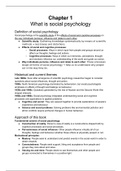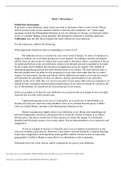Samenvatting
Summary Chapter 1-8 Social Psychology Part 1
This is an elaborated summary of the first 8 chapters of the book Social Psychology by Smith, Mackie and Claypool. It contains all the content of the first 8 chapters. Hope you will pass your exams!!
[Meer zien]







